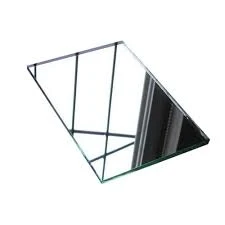

Exploring the World of Tinted Glass Manufacturing
In recent years, tinted glass has become increasingly popular in various architectural designs and automotive applications. Tinted glass not only enhances aesthetic appeal but also offers numerous functional benefits, such as temperature control, glare reduction, and UV protection. The tinted glass factory plays a pivotal role in producing this versatile material, employing advanced technologies and innovative techniques to meet the growing demand.
A tinted glass factory typically begins its operations with raw materials, primarily silica sand, soda ash, and limestone. These materials are melted at high temperatures in a furnace to create glass. In the tinted glass manufacturing process, metallic oxides, such as iron or cobalt, are added to the molten glass to achieve specific colors and degrees of tint. This is a crucial step, as the precise formulation determines the glass's transparency, color intensity, and overall quality.
Once the tinted glass is produced, it undergoes various processes, including forming, annealing, and surface treatments. The forming process involves shaping the molten glass into the desired form, whether it be sheets for windows or curved pieces for vehicles. After shaping, the glass is slowly cooled in a controlled environment through a process known as annealing. This step is essential to relieve internal stresses and enhance the glass's durability.

Quality control is a critical aspect of operations in a tinted glass factory. Manufacturers must ensure that the final products meet industry standards and customer specifications. This involves rigorous testing for thickness, tint uniformity, and visual quality. Advanced technology, such as spectrophotometers, is often employed to measure light transmittance and reflectance, ensuring the tinted glass performs effectively in various conditions.
The benefits of tinted glass extend beyond aesthetics. In commercial buildings, tinted windows can significantly reduce energy costs by decreasing the amount of heat that enters a space, thus lessening the load on air conditioning systems. In vehicles, tinted glass provides passengers with increased comfort by minimizing glare and protecting against harmful UV rays. Moreover, it adds a layer of privacy and security, making it a popular choice for both residential and commercial establishments.
As sustainability becomes a pressing global concern, tinted glass factories are also exploring eco-friendly practices. This includes recycling glass waste and using energy-efficient technologies throughout the manufacturing process. By adopting such measures, manufacturers can minimize their environmental impact while meeting market demands.
In conclusion, tinted glass factories play an essential role in producing a valuable product that enhances both functionality and aesthetics in a wide range of applications. By leveraging advanced manufacturing techniques and focusing on quality and sustainability, the industry is well-positioned to meet the diverse needs of consumers and contribute positively to the environment. As innovation continues to drive the market, the future of tinted glass manufacturing looks bright.